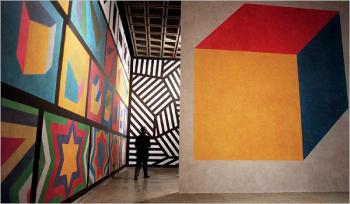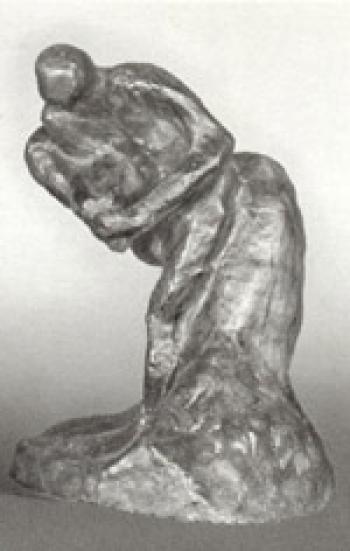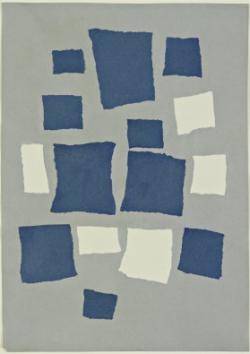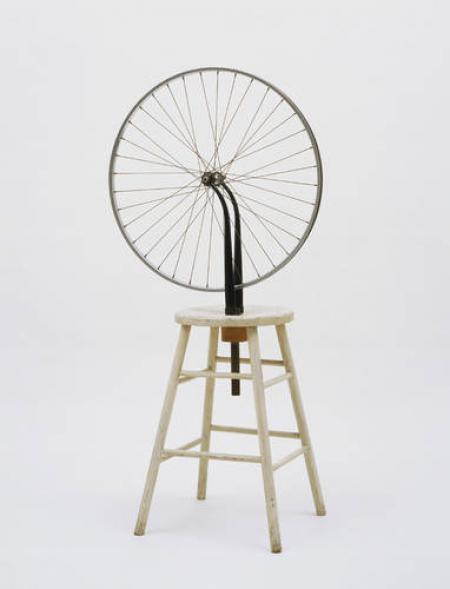Serendip is an independent site partnering with faculty at multiple colleges and universities around the world. Happy exploring!
Play in the City 2013

|
|
Welcome to the on-line conversation for Play in the City, an Emily Balch Seminar offered in Fall 2013 @ Bryn Mawr College, in which we are addressing the question of how we construct, experience, and learn in the act of play. How is play both structured by the environment in which it occurs, and how might it re-structure that space, unsettling and re-drawing the frame in which it is performed? This is an interestingly different kind of place for writing, and may take some getting used to. The first thing to keep in mind is that it's not a site for "formal writing" or "finished thoughts." It's a place for thoughts-in-progress, for what you're thinking (whether you know it or not) on your way to what you think next. Imagine that you're just talking to some people you've met. This is a "conversation" place, a place to find out what you're thinking yourself, and what other people are thinking. The idea here is that your "thoughts in progress" can help others with their thinking, and theirs can help you with yours. |
Who are you writing for? Primarily for yourself, and for others in our course. But also for the world. This is a "public" forum, so people anywhere on the web might look in. You're writing for yourself, for others in the class, AND for others you might or might not know. So, your thoughts in progress can contribute to the thoughts in progress of LOTS of people. The web is giving increasing reality to the idea that there can actually evolve a world community, and you're part of helping to bring that about. We're glad to have you along, and hope you come to both enjoy and value our shared explorations. Feel free to comment on any post below, or to POST YOUR THOUGHTS HERE.

Play in the Chinatown
Coming up from the train station and crossing one crossroad, my partner and I glanced at each other with happiness in our eye, because the gate of Chinatown shining under the sunlight appeared in front of us. With the distance of the gate and us becoming shorter and shorter, more and more people with black eyes and black hairs walked around us, and we heard some familiar Chinese words. At that moment, my heart was full of pleasure and surprise. After several weeks of being away from my hometown, it was my first time to see so many Chinese people and words. My partner read every word she saw, and took as many photos as she could to memorize this afternoon. Some restaurants put their menus on the window, and almost all the food we have tried in China. We stood before the window and seemed that we have come back to the previous life in China.
We walked around the roads again and again, and the excitement started to appease. Finally we sat in a Chinese restaurant where all the waiters and waitresses were people with black eyes and hairs. Then we ordered some food in Chinese spontaneously: the Xiao long bao, vegetable fried rice and Jiuniang yuan xiao. To my first surprise, I found the waiter did not write Chinese words on the paper, and he wrote in English. Then the second came: the thick cover of Xiao long bao and the filling of yuan xiao.

Tag-You're it!
It looked a like a bunch of noodles from alphabet soup that had been left overnight in the broth, so they absorbed too much water and became bloated before someone pushed them all together and slapped them on the building.
I honestly couldn’t even tell if I was looking at letters, or if I was just looking at abstract shapes that someone had painstakingly spray-painted onto the wall.
It was a tag, and it’s just one of the many I’d seen around Philly. The walls and bridges I saw on the train ride in were lousy with them. Some pieces looked like they’d been there as long as the walls, while others looked like they could have been put up this morning.
The parts of the city we explored were not as graffiti-rich as I’m sure others are, because they’re tourist destinations, and are most likely scrubbed clean every month or so. That doesn’t mean there weren’t any to be seen, but at the time, I didn’t even pay the small tags much attention.

South Street
After making many trips into Philadelphia the past few weeks I can really see how it’s considered a “City of Neighborhoods”. This concept really struck me on Friday, however, when I visited Philly’s Italian Market, South Street, and the many sections in between. I prefer these areas to Center City; they seem more honest, raw, and interesting to me while reminding me an awful lot of downtown New York. The first time I walked through South Street was last Friday when my group and I visited Magic Gardens. I saw how influenced the blocks were by the “younger generations” through art, music, and style.

10 minutes of research: André Cadere
André Cadere was an artist in the 70's who created pieces called "Barres." They were a series of small wooden cylinders painted bright colors, then glued together into long sticks. Cadere carried the sticks around France, Germany, and New York, interacting with people on the streets and subways, and even leaving the pieces in the galleries of other artists. The Barres could be displayed leaning up against a wall, on the floor, and in numerous other ways. His works were very playful in that the colors on his Barres were arranged in a pattern, except for one anomaly. The cylinders were visibly cut and sanded by hand, and some of the glue could still be seen in the borders between them. After Cadere’s death in 1978, his Barres became less playful, because he wasn’t around to interact with them anymore. Part of their appeal came from how he defied the traditional ways of displaying art, and the spontaneity that came with that
.

Playing in mosaic
Immersed in mosaic world established by Zagar, I was amazed. Because painting, drawing and doing art are too orthodox to describe what Zagar has done, I would like to believe that he is not working; he is playing. He is playing with the broken pieces, playing with the colors and playing with the audiences.
What is playing?
Playing is a subversive and artistic attitude.
Sol LeWitt
“…while conceptual art uses its own logical strategies for execution, “conceptual art is not necessarily logical…””

Linked to movements such as minimalism and conceptualism, Sol LeWitt was an influential American artist. He painted or sculpted basic shapes, playing with lines and color combinations. He is most famous for his wall paintings, where his work is actually painted onto the walls of the museum. Over his career he made over 1,200 drawings and paintings. I found a lot of time-lapse videos of his work being installed: http://www.massmoca.org/lewitt/timelapse.php?id=10. As you can see, many people work on each painting, according to LeWitt's plan. This technique of providing instructions to carry out his idea is his connection to Flanagan's concept of critical play. She writes "For Lewitt, art making-as-instruction was a performative game with concrete rules and outcomes." These "rule-drivin visual works" are the product of many artists completing his instructions in a way that Flanagan considers to be critical play. Every time the work is completed, it changes a little bit. His work has been compared to musical compositions because his original score stays the same, but it can sound different every time.

It's Always Sunny in Philadelphia
Perspective is everything. When you throw out your trash, you don’t see it as art or something to play with. Those glass bottles you’re about to throw out are probably going to go to the landfills, lost within other glass bottles or dirty paper towels. That broken bike you can’t trust anymore will also make the trip to the landfill, as will those outdated wall tiles that once decorated your home.
Isaiah Zagar sees the glass bottles, broken bicycle, and wall tiles as art. He sees them as parts of his art. One man’s trash is another man’s artwork. The Magic Gardens in Philadelphia show us that our trash can be beautiful; it isn’t just stinky junk that we don’t want anymore. When you throw out your trash, you don’t think that it can be a part of a mosaic that people pay money to visit. Flanagan says that artists “created “situations” and performed art actions complete with instructions.” We use play and art as “a way to rethink issues of authority, politics, and the notion of a cultural status quo.” As a result, I feel as if Isaiah Zagar is using these mosaics to show us that some trash can be used as art and that it can be beautiful.

What Is Play?
Samantha Plate
Play In The City
09/29/2013
What Is Play?
What is play? This is the question that Mary Flanagan tries to answer. She is unable to come up with one specific definition. When asked to describe the reading in class I said “refreshingly indecisive”. The fact that Flanagan admits there are many definitions of play is truly refreshing. Theorists, psychologists, are scientists are always trying to pin “play” down and give it a strict definition. But play in itself defies definition- it is playful. Play sets all the rules and breaks them too. There are so many ways to describe this essential part of life, but no way to define it.
I truly felt this idea that play cannot be defined on my last trip to Philadelphia. After visiting the mosaic garden my group and I decided to wander around the area, hoping to stumble upon more mosaics. We found ourselves walking in the “wrong” direction, but now I realize it was the right one. We ended up at a playground.

Gutai Movement
When I was skimming through Flanagan for the first time, the words "Gutai Movement" jumped out at me. I decided to research what this was, and came up with something a bit more specific-- an exhibit (already past) about the Gutai movement at the Guggenheim Museum in New York called "Gutai: Splendid Playground".
The article about this exhibit gave me these facts:
- Gutai is a Japanese postwar art movement
- It's a combination of painting and sculpture
- The exhibit involves participatory play
- There is a canvas with the sign "Please Draw Freely": each visitor can draw on the initially blank canvas so that it becomes a collaborative work of art
- Gutai was meant to "rebuild democracy by both demonstrating and encouraging symbolic acts of independence"
- Gutai underscores and cultivates connections among the new art of Europe, America, and Japan
- Some of the art is painted with feet, some with robots, and some with fire (yes really!)
Here's the link to the article: http://www.nytimes.com/2013/02/15/arts/design/gutai-splendid-playground-at-the-guggenheim.html?pagewanted=all&_r=0
and to the exhibit: http://www.guggenheim.org/new-york/exhibitions/past/exhibit/4495

Henri Matisse's Sculptures
Henri Matisse has long been one of my favorite painters yet up until a few days ago while researching him, I had never seen one of his sculptures. Although he is labeled as a one of the most important painters in Fauvism, he was also a draughtsman, printmaker, and sculptor. Matisse sculpted his figures to express stress and pain and they were certainly darker than his paintings. He exaggerated the figure’s contours in order to show their struggle. Much of the figures are twisted and in strange positions. 

Marcel Duchamp and Vassily Kandinsky
As an aspiring art history major, I was pretty excited when I recognized some names when reading Flanagan's text. I was especially excited when I found Marcel Duchamp and Vassily Kandinsky. Though I know some of their artworks, I am not completely fluent in the movements they founded and advocated. As a result, I researched on both artists.
One of Marcel Duchamp's most famous artworks would be The Fountain, which he made in 1917. What was interesting about this piece is that it was a urinal with some words written on it. The point of the piece was to demonstrate ready-made art and how our culture since the Industrial Revolutions changed to become one with a high nature of factory-made items. This made me think about how our play has changed today from being outside in nature versus staying in and playing with our mass produced toys.


More than ten minutes of research (only those willing to subvert the rules of the assignment should read on):

Consider
1) An artist (Dove Bradshaw) claims a fire hose in the Metropolitan Museum of Art as a work of art.
2) She posts a label next tot he hose, and replaces it whenever it is removed.
3) She photographs her work and has postcards printed. She (secretly) deposits these postcards in the museums own gift shop. And they sell them. For years.
4) The museum acquires a photograph of the firehose and accepts it (the photograph) into its collection.
5) The firehose itself is later acquired by the museum that owns it; the artists work is donated to the museum, which is acknowledges in letters to the donor.
6) An artist book is created in an edition of 10 to document the trajectory of this project, which is now called a performance.
7) The book is published free online and you can peruse its 86 pages.

About Marcel Duchamp
I was going to do some research on surrealism, but Marcel Duchamp suddenly jumped into my sight. His pieces as well as his lifestyle have some really intriguing parts.
According to the research, he wasn't intending to be an artist while growing up, and only did so because he wasn't willing to serve for the military. When he went to the art school, his talent didn't seem to be discovered, he tried different styles, including fauvist (I also noticed he later married the post-daughter-in-law of Henry Martis and Martis was the founder of fauvism), impressionism, post-impressionism.
Later he figured these traditional arts were not what he likes, and decided to create something new. He mocked the traditional art----he added mustache on Mona Lisa and claimed that there's no perfection in art, this idea later made him the representative of Surrealism and Dadaism. The action of sending a photo named Fountain (which is a picture of a urinal) to the museum was a mock of traditional art.
He is considered one of the authorities of the long history of art while proposing to put aside the authority and make art without bounded by the previous art pieces. As one the most influential artists, Marcel has being playing with art and did creations that challenged the art field in his own way.


Penis Headband
I had walked into Condom Kingdom without a reason for going in or an objective; this was not a shopping trip. Yet, I stood there holding a headband that was adorned with two sparkly pink penises and considered buying it. I could wear it on the blue bus, eat dinner in Erdman with it on my head, and even incorporate it into my Halloween costume. To me, the headband exemplified everything that the name “Condom Kingdom” implies: a light-hearted, humorous approach to sexuality. Owning it would not only make my friends laugh, it would be a way to work against the repression of female sexuality. Although I did not know it then, I was demonstrating Flanagan’s terms, “play” and “critical play,” and experiencing the effect of the city on “critical play” and one of the flaws of “critical play”.
Flanagan defines “play” when she writes, “In play, the aim is play itself, not success or interaction in ordinary.” Unlike Flanagan’s qualification for “play,” I believed I was playing in Condom Kingdom because I was having fun. Still, both definitions constitute my experience as a playful one; since I went into Condom Kingdom to play (not to bond with my other group members or to buy an item), I was playing for “play itself.”

What is Play?
What is Play?
Yijing Lu
When I am reading that part of the definition of “play” in Critical Play by Mary Flanagan, many experience and ideas of my trips to Philadelphia jump into my brain. I never tried to make any relationship between my experience of play and theories from books before. However, I have to admit that it is exciting and meaningful to combine some definitions and actions to achieve something new of feedback.
“Play is a notoriously difficult concept to define; it is a culturally and socially specific idea.”
I agree with this opinion. “Play” is an abstract word that can be considered as games of various sorts, or can be treated as kinds of actions for fun. In this sentence above, the author mentions “culturally” and “socially”, and I want to add one more word “personally”, because in my opinion, “play” can be defined by every individuals. For example, playing piano can be a kind of “play” for people who are good at or enjoy it, but it also can be a kind of torment for a poor girl who is compelled to learn piano by her strict mother. In other words, if you like, everything can be a kind of playing --working can be a kind of playing, because you may get a sense of achievement; studying can be a kind of playing, because you may enrich your knowledge; reading can be a kind of playing, because you may widen your horizon; and, even sleeping can be a kind of playing, because you may have an amazing dream!

Really By Chance?
I did some research about Dada, especially the artist Arp. There is some discussion about whether he's really create his work by chance?
http://www.francois-murez.com/compoarp%20en.htm
some one analyze the art from Arp. To most of them,it's hard to believe Arp created his work really by chance. The golden section applys a lot in his work. When the people really try to create things like Arp did, "It doesn’t work. The squares never land where they should. We always feel compelled to adjust the spaces between the papers, moving them closer together or further apart." (http://artofcollage.wordpress.com/2012/04/25/collage-according-to-the-laws-of-chance/)

10-minute research: George Braque
http://en.wikipedia.org/wiki/Georges_Braque
Braque believed that an artist experienced beauty "… in terms of volume, of line, of mass, of weight, and through that beauty [he] interpret[s] [his] subjective impression...”He described "objects shattered into fragments… [as] a way of getting closest to the object…Fragmentation helped me to establish space and movement in space”.He adopted a monochromatic and neutral color palette in the belief that such a palette would emphasize the subject matter.

10 Minutes of Research: Dada Movement and Marcel Duchamp
The Dada movement was an artistic movement, that centered itself around the idea of being anti-art. It aimed to offend, to shock, to critisize, to disturb the senses; if art did one thing, Dada aimed to do the other. This was in protest to what the Dada artists thought of as a world slowly killing itself, a borgiuazie who would rather fight a war with itself than change how the society works.
Of those artists, one whom I find particularly interesting is Marcel Duchamp, the infamous artist behind "The Fountain", a urinal hung on a museum wall with a fake signature. He also created a piece called "Bycicle Wheel", currently on display in New York's Museum of Modern Art; when that sculpture was originally displayed, the artist invited viewers to interact with and spin the bycicle wheel, although that is no longer allowed now that the piece is displayed in MoMA.


10 minutes of research 3: Yes Men, Ladies Against Women, and the Barbie Liberation Organization
Flanagan mentions The Yes Men. Here's video of the outcome of one of their stunts.
or here: http://rt.com/usa/yes-men-bank-people-510/
During the Reagan administration, which none of the students in this class will remember, women who felt as if their rights were being cut back started a group called LADIES AGAINST WOMEN. They would go to places where the first lady was appearing and they would "protest" against the rights of women, making the positions of those who actually opposed womens' rights look...silly. Here is footage of some of these women at a parade, not in the context in which they usually performed.
http://www.youtube.com/watch?v=kxlYKR0zZVM
Flanagan does not mention the Barbie Liberation Organization, but she might have. A number of activist/artists, working in secret, attained possession of Barbie Dolls and G.I. Joe Dolls (American soldier dolls for boys) and switched their voiceboxes, after which, thety re-boxed them and put them on store shelves. So lots of little girls got Barbie Dolls who talked like men about war and fighting...and lots of boys got "fighting man" dolls who would say (in a prissy girl voice), "Math is harrrd."
Here's film:


